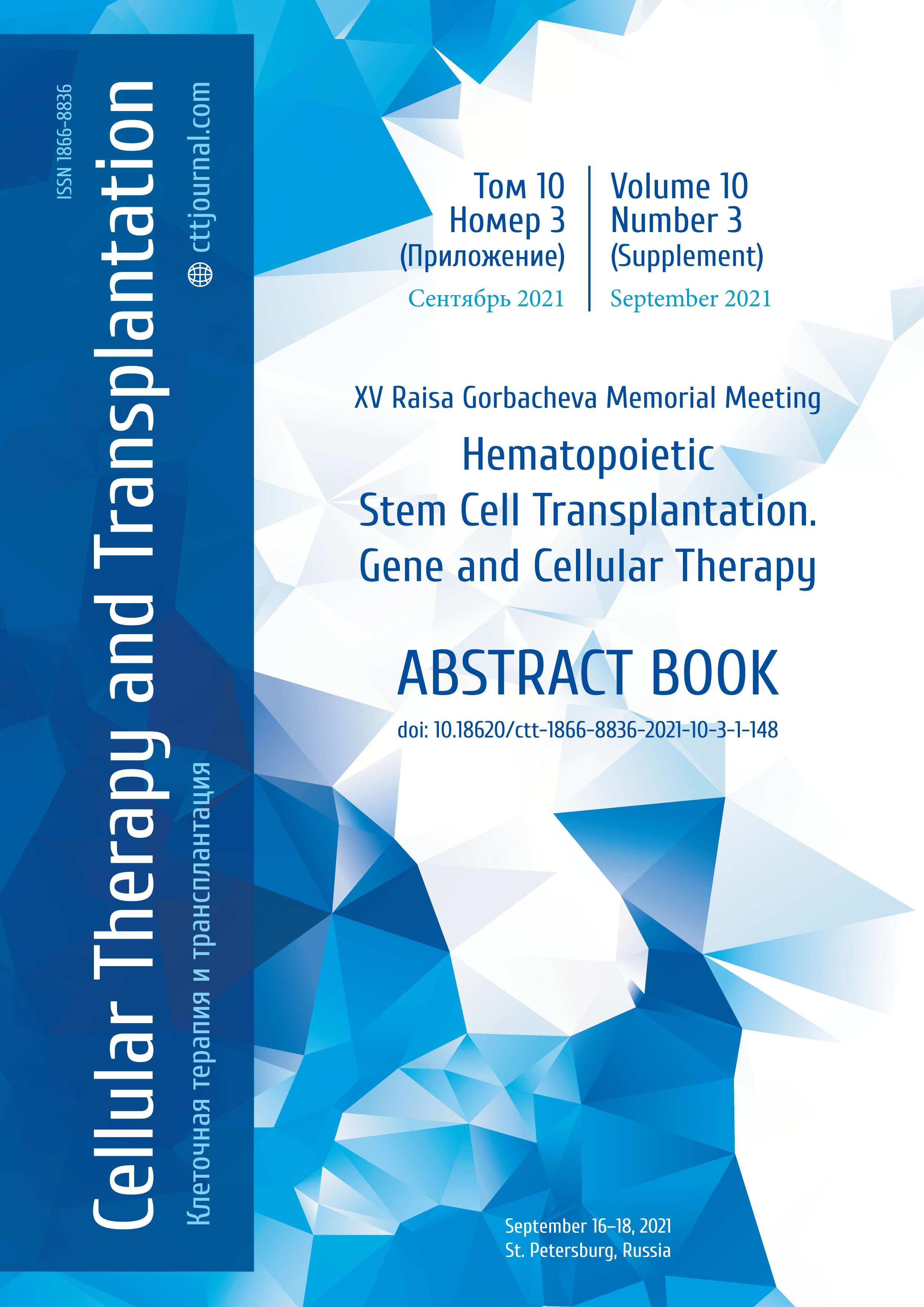CM-07. Prognostically unfavorable immunophenotypic and cytogenetic markers of transformation into acute leukemia in adult patients with myelodysplastic syndrome
Hanna S. Trubkina, Ihar A. Iskrou, Irina Yu. Lendina, Victoria V. Smolnikova, Tatiana V. Lebedeva
Minsk Scientific and Practical Center of Surgery, Transplantation and Hematology, Minsk, Republic of Belarus
Correspondence:
Dr. Hanna S.Trubkina, phone: +375 (017) 277-19-36, e-mail: anyatrubkina@mail.ru
Summary
The prognosis of subsequent course of the disease at initial diagnosis is of great importance for both patients and clinicians. This is especially true for myelodysplastic syndrome (MDS), which is characterized not only by a variety of clinical manifestations, but also by a large difference in survival and time of transformation into acute leukemia. The aim of the study was to analyze prognostically unfavorable immunophenotypic and cytogenetic markers of transformation into acute leukemia in adult patients with myelodysplastic syndrome.
Materials and methods
The prospective cohort study included adult patients with newly diagnosed myelodysplastic syndrome (MDS) treated in the State Institution “Minsk Scientific and Practical Center for Surgery, Transplantation and Hematology” in the period from January 2017 to July 2021. All patients underwent a primary diagnostics (including immunophenotyping and cytogenetic study of bone marrow aspirate). To explore prognostically unfavorable markers we use multistate illness-death model. We consider the following conditions: diagnosis, transformation into leukemia, death. For statistical analysis of the data, we used the Statistica 10 program (Kaplan-Meier curve).
Results and discussion
Based on the results of the “diagnosis-transformation” model analysis the statistically significant immunophenotypic and cytogenetic markers of an unfavorable prognosis of transformation into acute leukemia were obtained: CD 71 ≥ 65% HR 4.1 (1.35-12.4 CI; p=0.013); CD 13 >75% HR 2.8 (1.1-7.1 CI; p=0.034); the presence of complex aberrations >3 HR 2.8 (0.86-9.0 CI; p=0.087).
In the patients with newly diagnosed MDS, the median time to transformation into acute leukemia was 500 days versus 1000 days with CD71 expression of <65 % (p=0.026) as seen in Fig. 1.

Figure 1. Survival curves in high-risk MDS patients with low CD71 (marked blue) and high CD71 expression (red)
The median time to transformation into acute leukemia in these MDS patients with CD13 expression on >75% on blast cells was 420 days versus 760 days in cases of <75% expression (p=0.07). Moreover, the median time to transformation to acute leukemia in patients with MDS with >3 complex aberrations in bone marrow aspirate is reduced to 500 days, compared to the patients without complex aberrations (750 days).
Сonclusion
We found that the presence of aberrant CD71 expression in ≥65% of blast cells, CD13 in >75% of blasts, as well as complex cytogenetic aberrations in >3 metaphases in the patients with newly diagnosed MDS are associated with a decreased time to transformation into acute leukemia.
Keywords
Myelodysplastic syndrome, flow cytometry, expression, cluster of differentiation.


